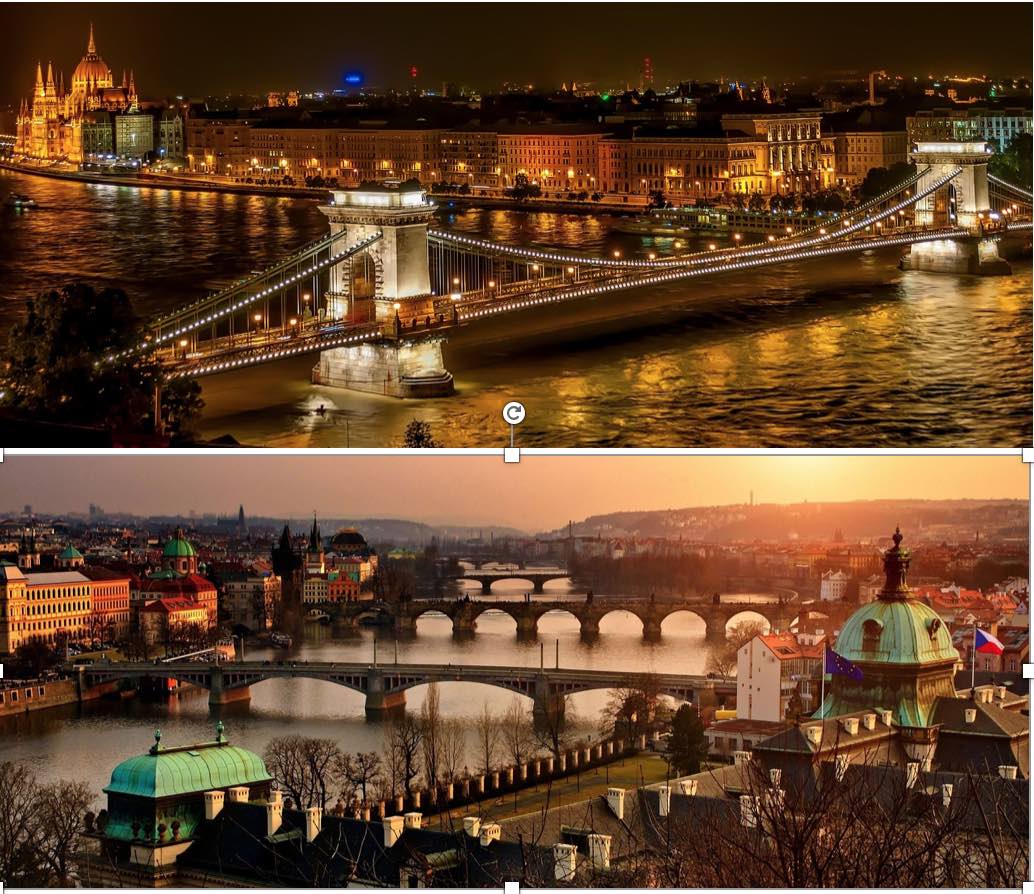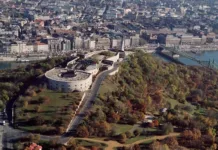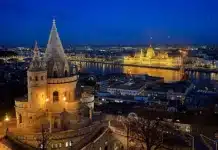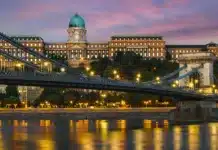When planning a trip to Central Europe, two cities that often come to mind are Budapest and Prague. These historic capitals offer a wealth of culture, stunning architecture, and unique experiences. But which city should you choose to visit?
In this comprehensive guide, we’ll delve deep into the highlights and distinctive features of both Budapest and Prague, helping you make an informed decision!
OVERVIEW OF BUDAPEST
Nestled along the banks of the majestic Danube River, Budapest, the capital of Hungary, is a city of contrasts. With a rich history that spans centuries, it offers a blend of stunning architecture, vibrant culture, and soothing thermal baths.
Let’s take a closer look at what Budapest has to offer:
Major Attractions: Budapest boasts an array of iconic landmarks! Buda Castle, with its historic architecture and panoramic views, draws visitors to the hilly Buda side. The Danube River, elegantly bisecting the city, is lined with historic bridges, including the renowned Chain Bridge. Meanwhile, Széchenyi and Gellért Baths invite travelers to unwind in their healing thermal waters. The House of Terror Museum provides a sobering look at Hungary’s dark history, while the Budapest Parliament Building showcases the city’s grandeur. The Great Market Hall, a bustling marketplace, offers a wide array of Hungarian cuisine, from paprika and sausages to handmade crafts.
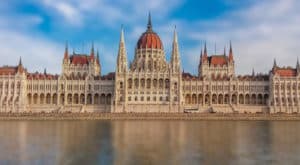
Culinary Delights: Hungarian cuisine is known for its hearty, flavorful dishes. Don’t miss the opportunity to savor traditional treats like goulash, chimney cake, and paprika-spiced dishes. Budapest’s lively markets and restaurants provide a delightful culinary journey, with places like the Central Market Hall offering a wide range of local delicacies.

Baths: Budapest boasts some of Europe’s finest thermal baths, offering a rejuvenating experience amidst stunning architecture. Gellért Baths, with its Art Nouveau design, is renowned for its mineral-rich waters and opulent surroundings. Széchenyi Baths, set in City Park, is the largest medicinal bath in Europe, featuring outdoor pools and a grandiose yellow façade. Rudas Baths, a Turkish-style thermal bath, provides a unique historic ambiance with its Ottoman architecture and panoramic views of the Danube. Lukács Baths, favored by locals, blend traditional and modern elements, offering a tranquil escape. Budapest’s thermal baths not only pamper visitors but also showcase the city’s rich spa culture.
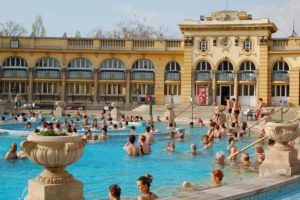
Cultural Scene: Budapest is a hub for culture and the arts. The Hungarian State Opera House, a neo-Renaissance gem, hosts world-class performances, including operas and ballets. The Budapest Festival Orchestra, led by the acclaimed conductor Iván Fischer, is internationally renowned and offers a diverse repertoire. Art enthusiasts can explore the Hungarian National Gallery, home to an extensive collection of Hungarian art, and the Ludwig Museum of Contemporary Art, featuring works by prominent international artists. Budapest also boasts an array of theaters, including the Katona József Theatre, which is known for its outstanding dramatic performances.
Hidden Gems: In addition to its major attractions, Budapest is filled with hidden gems waiting to be discovered. Explore the city’s ruin pubs, such as Szimpla Kert, which offer a unique atmosphere and a glimpse into Budapest’s creative spirit. For a tranquil escape, Margaret Island provides a green oasis in the heart of the city, with beautiful gardens, walking paths, and even a musical fountain.
OVERVIEW OF PRAGUE
Prague, the capital of the Czech Republic, is a city that exudes charm and history. Its enchanting old town, Gothic and Baroque architecture, and a river that gracefully meanders through the city create a picturesque backdrop. Let’s delve into what Prague has in store for travelers:
Major Attractions: Prague Castle, the world’s largest ancient castle complex, is a must-visit, housing historic buildings, museums, and the stunning St. Vitus Cathedral. Charles Bridge, with its intricate statues and lively atmosphere, is an iconic bridge for strolls. The Old Town Square, with its Astronomical Clock, is a central gathering point for tourists. The Josefov Jewish Quarter offers a glimpse into Prague’s diverse history. Don’t miss the quirky Museum of Communism, which offers a unique perspective on the city’s 20th-century history.

Culinary Delights: Czech cuisine is all about comfort food. Indulge in dishes like trdelník (sweet pastry), roast duck with sauerkraut, and classic Czech beer. Prague’s numerous beer gardens offer an authentic taste of the local beer culture, and the city’s restaurants range from traditional to modern. Cafe Louvre, a historic café in the city center, is famous for its grand interior and traditional Czech dishes.
Cultural Scene: Prague has a thriving cultural scene. Classical music enthusiasts can attend concerts in historic venues like the Municipal House, which features stunning Art Nouveau architecture. The Prague National Theatre is a cultural institution with a long history, hosting opera, ballet, and drama productions. The city is also known for its literary history, with famous authors like Franz Kafka and Milan Kundera. The Franz Kafka Museum provides insight into the life and works of this renowned writer.
Hidden Gems: Prague’s hidden gems include the stunning Strahov Monastery Library, known for its exquisite baroque library hall. The John Lennon Wall, a colorful tribute to the iconic musician and the spirit of peace and love, is a unique sight to explore. The charming Golden Lane, a street of tiny, colorful houses within Prague Castle, offers a glimpse into the past. The Petřín Hill, a lush park overlooking the city, is a serene escape from the urban bustle.
Comparing Attractions: Budapest or Prague ?
When deciding between Budapest and Prague, it’s essential to consider the major attractions each city offers:
- Budapest: Budapest’s appeal lies in its thermal baths, including the superb Széchenyi Baths and historic Gellért Baths. The city is also home to the intricate Buda Castle, the poignant Shoes on the Danube Bank memorial, and an array of museums. The Great Market Hall, a bustling marketplace, offers a wide array of Hungarian goods.
- Prague: Prague’s charm emanates from its stunning Prague Castle, the Charles Bridge, and the Astronomical Clock. The city is a living museum, with well-preserved architecture around every corner. The historic Josefov district provides insight into Prague’s Jewish heritage. Don’t miss the quirky Museum of Communism, which offers a unique perspective on the city’s 20th-century history.
In Budapest, you can explore the city’s rich history, architectural wonders, and soothing thermal baths, while Prague offers a well-preserved medieval old town, historic landmarks, and unique insights into its history.
Accommodation and Budget – Budapest or Prague ?
Both Budapest and Prague offer a range of accommodation options, from luxury hotels to budget hostels. However, there are some differences to consider:
Budapest is known for offering a great value for travelers. Accommodation, dining, and activities are generally more affordable than in many other European cities. You can find budget-friendly hostels and apartments without sacrificing quality. District VII, the city’s bustling Jewish Quarter, is home to many boutique hotels and a vibrant nightlife scene. Budapest also offers a variety of budget-friendly options for travelers, including hostels and guesthouses.
Prague while still relatively affordable compared to Western European capitals, has seen an increase in tourist popularity, which can impact prices. However, with some research, you can still find reasonably priced accommodation and dining options. The charming Mala Strana (Lesser Town) district, located below Prague Castle, offers unique accommodations in a picturesque setting. The city has a wide range of accommodation options, from luxury hotels to boutique guesthouses and budget-friendly hostels.
Weather and Seasons
The time of year you plan your visit can significantly impact your experience in either city:
Budapest experiences warm summers and cold winters. Spring and autumn offer milder temperatures, making them ideal for sightseeing. Summers are perfect for outdoor activities, while winters create a fairy-tale atmosphere, especially around Christmas. The Budapest Christmas Fair and Winter Festival, held in Vorosmarty Square, is a charming winter tradition. Spring is a particularly lovely time to visit when the city’s parks are in full bloom.
Prague’s weather is also marked by warm summers and cold winters. Spring and early autumn are the best times to explore comfortably. Summers are popular for tourists, and winters create a fairy-tale atmosphere, especially around Christmas. The city’s Christmas markets, notably in the Old Town Square and Wenceslas Square, are famous for their festive spirit and handicrafts. The city’s parks and gardens, including the Royal Garden at Prague Castle, come alive with colorful blooms in spring.
Personal Preferences
Ultimately, your choice between Budapest and Prague should reflect your personal interests and travel goals. Consider the following:
- History and Architecture: Prague’s historic Old Town and elegant architecture may be more appealing if you’re a history enthusiast. On the other hand, Budapest’s Buda Castle and thermal baths offer a unique historical and relaxation experience. If you’re interested in architecture, both cities offer stunning examples, from Prague’s Gothic and Baroque structures to Budapest’s mix of architectural styles.
- Nightlife: Budapest is renowned for its lively nightlife scene, including ruin pubs and clubs. The city’s District VII, also known as the Jewish Quarter, comes alive at night with a variety of bars and entertainment venues. In Prague, you’ll find a vibrant nightlife with a range of bars and clubs, particularly in areas like Zizkov and Vinohrady.
- Relaxation: Budapest’s thermal baths are perfect for relaxation, with Széchenyi Baths being a favored choice. The city’s parks, like Margaret Island, offer serene settings. Prague, with its picturesque parks along the Vltava River, provides tranquility, and you can take a leisurely cruise on the river for a peaceful experience. Both cities offer opportunities for relaxation, whether it’s in thermal waters or by the riverbanks.
- Cultural Events: Consider the timing of cultural events, festivals, or exhibitions you’d like to attend in either city. Budapest’s contemporary art scene is vibrant, with exhibitions at institutions like the Ludwig Museum of Contemporary Art. Prague is known for its film festivals, including the Karlovy Vary International Film Festival, and its classical music events in stunning venues like the Municipal House.
Final Thoughts !
Which City Should You Visit: Budapest or Prague ?
In the end, there’s no definitive answer to whether you should visit Budapest or Prague! Both cities are captivating and have their own unique allure. Your choice should reflect your interests and the kind of experience you want to have. Whether you decide to soak in Budapest’s thermal baths, immerse yourself in Prague’s historical charm, or explore both, you’re in for a memorable European adventure.
Indeed, traveling to Budapest or Prague is not just about ticking off a destination on your list; it’s about immersing yourself in a unique European experience. Whether you choose the grandeur of Prague’s history, the thermal relaxation of Budapest, or a combination of both, both cities will leave you with unforgettable memories and a deeper appreciation for the rich tapestry of European culture.


